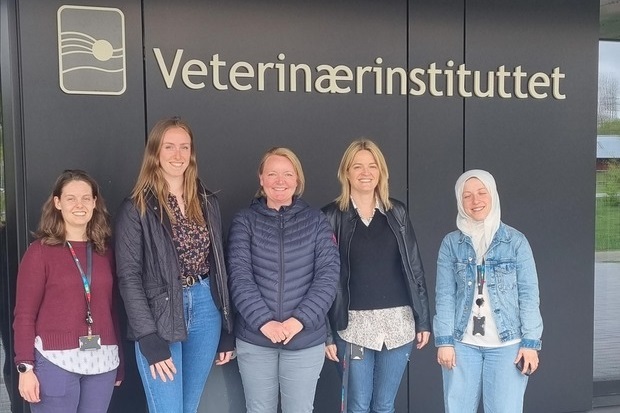
APHA is one of 44 international partners involved in the One Health European Joint Programme (OHEJP). The programme aims to reinforce collaboration between institutes involved in food, veterinary and medical research. One such way the OHEJP does this is via short term missions. These are small travel grants whereby, in my case, I travelled to the Norwegian Veterinary Institute (NVI) to share expertise and to harmonise existing methodologies used by both institutes.
I travelled to Norway during April this year, spending three weeks living in Oslo and commuting to NVI located in Ås, Viken. If you ever get a chance, I highly recommend visiting Oslo – or just Norway in general - it is a gorgeous country. Everywhere is spotlessly clean, transport runs on-time, and whilst Oslo city is very modern the surrounding areas respectfully preserve Norway’s history. And, of course, the fjords are incredible!

Everyone I met was extremely friendly and warm. All were very happy to speak English to me; in fact, my colleagues at NVI told me that Norwegians enjoy the chance to practise their English and that I shouldn’t worry about learning any phrases. However, I did attempt the occasional ‘Tusen takk’ (thank you) and quickly learnt the Norwegian for ‘Would you like a bag?’ when in the supermarket.
My current role at APHA involves work in the bacteriology department in the disinfectants research team. One of the recent projects I have been working on was funded by the OHEJP and involved a collaboration with NVI and the Robert Koch Institute (RKI) in Germany. This is where the connection with NVI began.
I approached our Norwegian colleagues to see whether I could visit them to undertake a small research project. They were more than happy to have me. A colleague of mine had also planned to visit NVI, however COVID-19 had other plans and had prevented her from going for two years. Together, we worked with NVI to design a research project which would benefit both institutes, and us as developing scientists.
The chosen project involved studying disinfectant application against bacteria in biofilms. APHA and NVI are both involved in biofilm disinfectant research and the spread of zoonoses in veterinary and agricultural environments. Therefore, the project merged both institutes’ areas of expertise.
Biofilms are caused when bacteria encase themselves in a protective layer. Common biofilms you may know of are those on your teeth or the gunk on your water tap or the light pink area in your shower. Because the bacteria are protected, they may remain after cleaning and disinfection. This is a big problem in veterinary practices and farms, causing persistent spread of disease.
We were all keen to identify whether bacteria protected by biofilm develop a tolerance to disinfectants over time following repeated disinfectant application; eventually resulting in the ineffectiveness of the disinfectant to kill the bacteria. Thus, our project title was born –
Tolerance of biofilm-forming bacteria to disinfectants after repeated exposure

Our chosen organism was Staphylococcus aureus, a bacteria more intensively studied by NVI, and we performed their biofilm testing method. S. aureus is a bacteria commonly found in both human and animal settings, therefore is highly relevant. We shared our knowledge on the use of disinfectants and provided advice on adaptations to the method. Everyone was more than happy to share and listen to advice.
Both institutes have since adopted changes to their ways of working. These include both small and large alterations, such as the methods used when labelling to drastic modifications to the test protocol. Due to our regular handling of disinfectants at APHA, we shared our hints and tips on how to best prepare the disinfectant. We also shared a few nifty little Excel short-cuts, which Ane from NVI was particularly happy to discover! Personally, I found the statistical knowledge I gained to be particularly helpful. I also enjoyed the opportunity to make decisions regarding the test steps, which I would not normally be so heavily involved in.
Following on from our visit, we have continued to remain in touch whilst completing a report for the OHEJP. Again, NVI were very helpful during the report writing stages, providing valuable comments. We aim to publish a small report and potentially undertake further testing in the future, expanding the project in many directions.
Whilst our relationship with our colleagues at NVI was primarily professional, the short-term mission has expanded this relationship into a personal one. We shared multiple stories and many-a-laugh whilst visiting, and already have an in-person catch-up planned at a conference in a few months’ time. NVI made us feel so at home, so when it came time to leave, it felt bittersweet.

Overall, my OHEJP short-term mission experience has been a great one. I couldn’t have asked for more welcoming and helpful colleagues, nor a project so suited to provide me development opportunities. Should the occasion arise for others, I would highly recommend undertaking a short-term mission.
I would like to say thank you to all those at NVI, APHA and EJP who were involved in arranging this mission.

Recent Comments